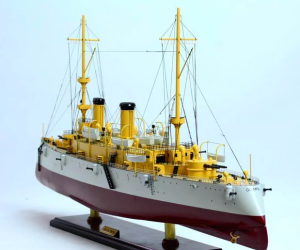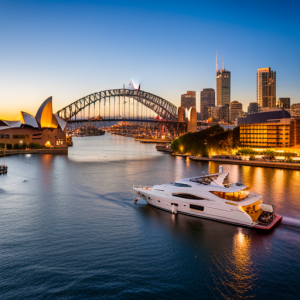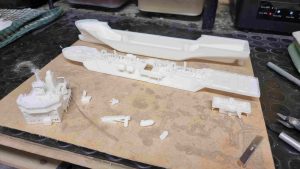Today marks the 40th anniversary since the raising of the Mary Rose’s wreckage in the Solent, on the 11th October 1982.

- See Above: The Recovered Wreckage in Portsmouth Historic Dockyard
The Mary Rose was a carrack-type warship that belonged to King Henry VIII. She was launched in July 1511, and subsequently served for a period of 33 years in a number of wars against France, Scotland and Brittany.
At first, the ship was capable of carrying 500 tonnes worth of cargo, but after being substantially rebuilt in 1536, she had a capacity of up to 800 tonnes. The Mary Rose was powered by sails, could complement 200 sailors, 180 soldiers and 30 gunners, and had approximately 80 guns onboard, including anti-personnel weaponry.
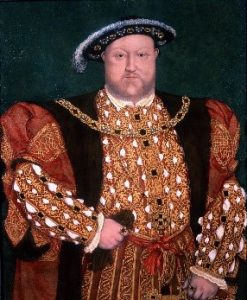
- See Above: King Henry VIII
When King Henry VIII inherited the small navy from his father, it only possessed two ships; Regent and Sovereign. A mere few months after his accession of the throne, two larger ships were ordered; one being the Mary Rose, and the other the Peter Pomegranate. It’s actually unknown which king ordered the construction of the Mary Rose, however, the building process began during Henry VIII’s reign. He oversaw the entire project, and he also ordered more large ships for construction. Within a decade of King Henry VIII’s reign, Britain’s navy had evolved from a measly battalion of medium-sized ships, to an established force which is today’s Royal Navy’s ancestor.
It’s believed that the ship was named the Mary Rose after one of King Henry VIII’s sisters, Mary Tudor, Queen of France. This is however unproven. The rose was a reflection of the emblem of the Tudors.
In terms of design, the Mary Rose was made following a common carrack-style. It was higher at the fore and aft, with a very low centre. It made use of its tumblehome shape, as this allowed it to carry more guns in the centre, just above the water line. This design also made boarding extremely difficult.
The hull of the Mary Rose consisted of four levels which were separated by three decks. Only parts of the hull survived, and so through observing the wreckage as well as depictions in art, it’s easy to guess the entire shape, but impossible to accurately visualise.
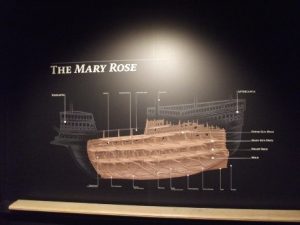
- See Above: A computer-generated image of what the Mary Rose may have looked like.
The Mary Rose’s first battle came in 1512, in a combined naval operation with the Spanish against the French. This was during the First French War, and she would also go on to serve during the Second French War, in 1522.
After this, the Mary Rose was kept in reserve, until 1545. This was following substantial repairs that took place in Portsmouth, however, there isn’t much documentation about this. In fact, there is very little in terms of historical artifacts that refer to the Mary Rose in this time period. Although, Thomas Cromwell wrote a document that stated the Mary Rose was ‘made new’ with brand new timber and materials, making it stronger and sleeker.
It was during the Battle of the Solent, during the Third French War, that the Mary Rose was sunk. On the 19th July 1545, the English were trapped in port and unable to escape. French galleys pushed forward, and instantly threatened to destroy 13 smaller galleys, as these were the only ships that could retaliate without the need for wind.
The wind did pick up, and so the Mary Rose and the Henry Grace of God began to lead the attack on the French in the Solent. The fortune was short-lived, as something went wrong with the Mary Rose early on in the battle. Suddenly, the Mary Rose heavily leaned over to her starboard side. Water began to rush in through the open gunports, and the quick intake of water rendered the crew obsolete. They all fled to the upper deck for safety as the Mary Rose began to sink, and as she leaned over, equipment, ammunition and other supplies all began to fall to the starboard side. Heavy guns came free and crushed a number of men, and for the men who weren’t trapped or crushed, they had little time to flee and wound up drowning amidst the chaos. To make matters worse, the anti-boarding netting came loose, and so any crew members fortunate enough to reach the upper deck were trapped beneath the netting.
Of the 400 crew members, as little as 35 survived. The mortality rate was upwards of 90%.
Only one eyewitness account of the sinking still exists to this day; a testimony written by a Flemish crewman. Apparently, crew members attempted to fire all the guns on one side, before turning sharply into a strong gust of wind, and this was the cause of the sinking.
Salvage attempts were ordered just days after the sinking, and they did actually manage to recover some rigging and guns, but couldn’t raise any parts of the hull. Several more attempts were made in 1546 and 1547, but they were all unsuccessful. By 1549, all of the guns had been salvaged, but hope of raising the entire wreckage had been lost.
The boat was eventually rediscovered in 1836 by a group of fishermen, but by this time, the ship had greatly deteriorated. Professional divers were able to salvage more items from the wreckage thanks to the recent invention of rubber suits and metal diving helmets, and they could identify the wreckage as the Mary Rose thanks to inscriptions on bronze guns.
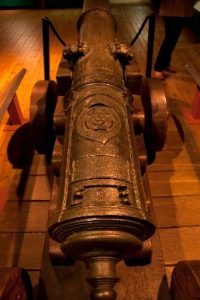
- See Above: A bronze cannon found in the wreckage of the Mary Rose, allowing divers to identify the ship.
One of the divers, John Deane, returned in 1840, but with a more destructive approach. He attempted to use bombs to penetrate the outer layers of the hull, which had sealed off the Tudor levels. He managed to retrieve a bilge pump, but only got into the remains of the sterncastle which now don’t exist. Luckily, the Mary Rose escape destruction, unlike other unfortunate ships found in the Solent, like HMS Royal George.
In 1965, the British Sub-Aqua Club initiated a modern-day search for the Mary Rose, and it was six years later, on the 5th Mary 1971, that the first structural details of the buried hull were discovered.
Following this, the discovery became known to the public, and so restrictions were put in place to prevent intruders and potential free divers. The public attention did help to fund new equipment, though, and by 1982 it was ready to be raised. On the morning of 11th October 1982, the final lift of the entire combination of cradle, hull and frame began. It was watched by the entire team, as well as King Charles III himself, who of course was Prince Charles at the time.
Should the raising have been put off any longer, the wreckage may have been susceptible to irreversible damage and decay.
Nowadays, the Mary Rose is located within Portsmouth Historic Dockyard, which is a mere five minutes from the main harbour. The new Mary Rose Museum is open to visitors, and people can go and see the ship as well as many artefacts, such as longbows, musical instruments, cannons, guns and more. As of 2018, the new museum had received over 1.8 million visitors.
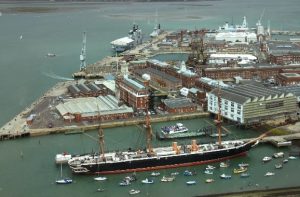
- See Above: Portsmouth Historic Dockyard
Premier Ships Models offers two variations of this brilliant ship; one being a kit perfect for experts, and the other being a high-quality ready-made model. The kit is built at a scale of 1 to 80, and uses double plank-on-frame construction. Both models serve as terrific replicas to the real-life counterpart.
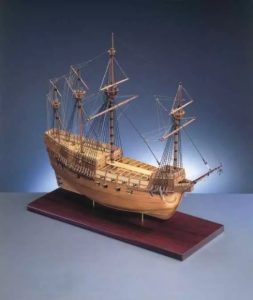
- See Above: PSM's kit of the Mary Rose
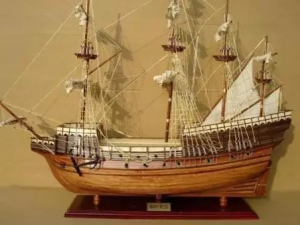
- See Above: PSM's ready-made model of the Mary Rose
The ship itself is of great historical significance, and so having it preserved in one of the UK’s most important docks is a fantastic way to pay homage to the crew, and all the people involved in its construction.

